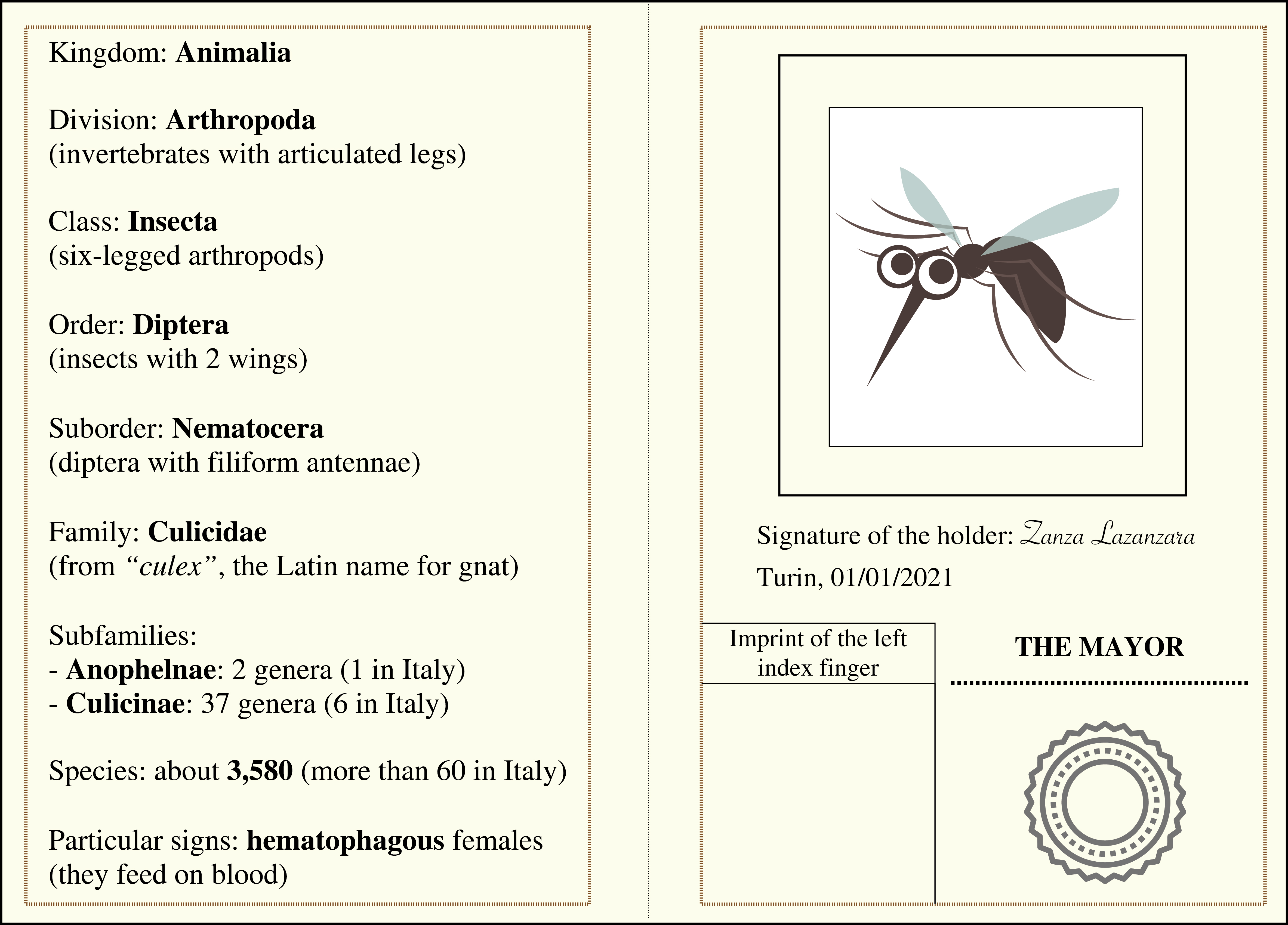AN OVERVIEW
Mosquitoes are insects belonging to the Order Diptera. In most of these species, the female needs a regular blood meal to take in all the substances necessary for the development of the eggs, which is not provided for in their normal diet. In fact, their basic diet consists of sugary liquids, such as the nectar from flowers, which can supply them with the energy that they need for flight, but not the proteins essential for the formation of hundreds of eggs.

These are insects with complete metamorphosis: the organisms that are born from the eggs, known as the larvae, are completely different from the adult form.
Mosquito larvae are aquatic organisms, which generally feed by filtering the water in which they live (however, there are some tropical predatory species) and take in atmospheric oxygen through their distinctive respiratory systems. This allows many species to live, even in anoxic waters; on the contrary, these systems are totally unsuitable for the survival of organisms that use oxygen dissolved in water.
A pupa is formed after four larval stages; it is mobile but does not feed. Once the development is complete, the pupa positions itself under the surface of the water, its cephalothorax cracks and the adult mosquito begins to emerge and after a few minutes, it is able to fly away.
After mating once, which is sufficient for all her life, the female then looks for a suitable host on which to make her first blood meal (some species can fly for many kilometers before the search, others for only a few tens of meters). After a sufficient meal and after digestion, the development of the first generation of eggs will be subsequently completed.
The female will then look for a suitable location to lay her eggs (from a few tens to a few hundreds, depending on the species, age, conditions, and size of the individual). Eggs are not always laid directly in water.
Some species lay them on solid substrates (soil, walls of a container, etc.) that are destined to be submerged with water. In this case, it is probably the microbial fauna of the site and/or the volatile chemicals it releases that induces the mosquito to choose a place where water has already been and is therefore likely to return. When this happens, the embryogenesis of the egg, interrupted at its oviposition, begins again, and leads to hatching. Therefore, the larvae are always aquatic.
Last modified: Jan 2021



